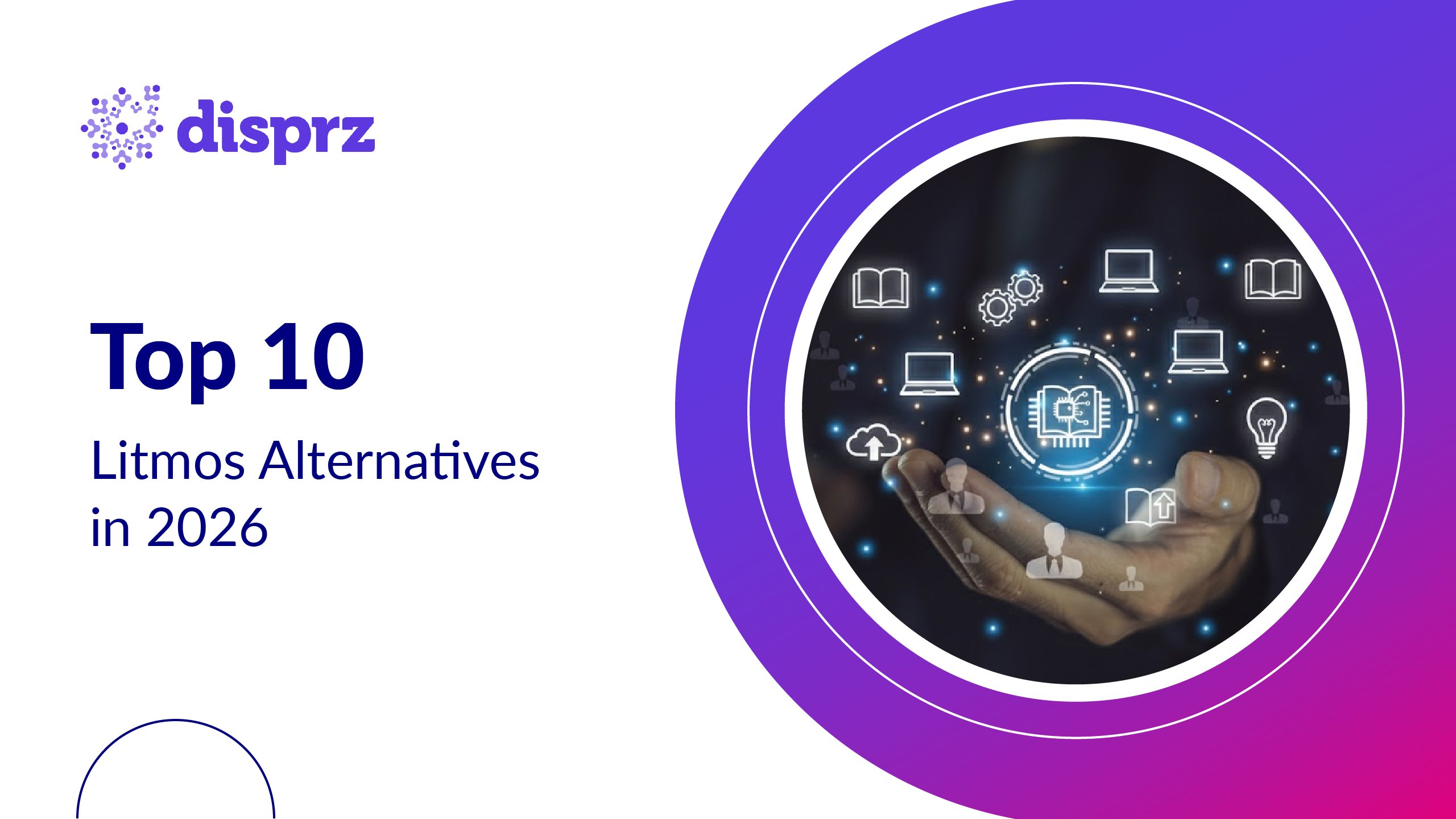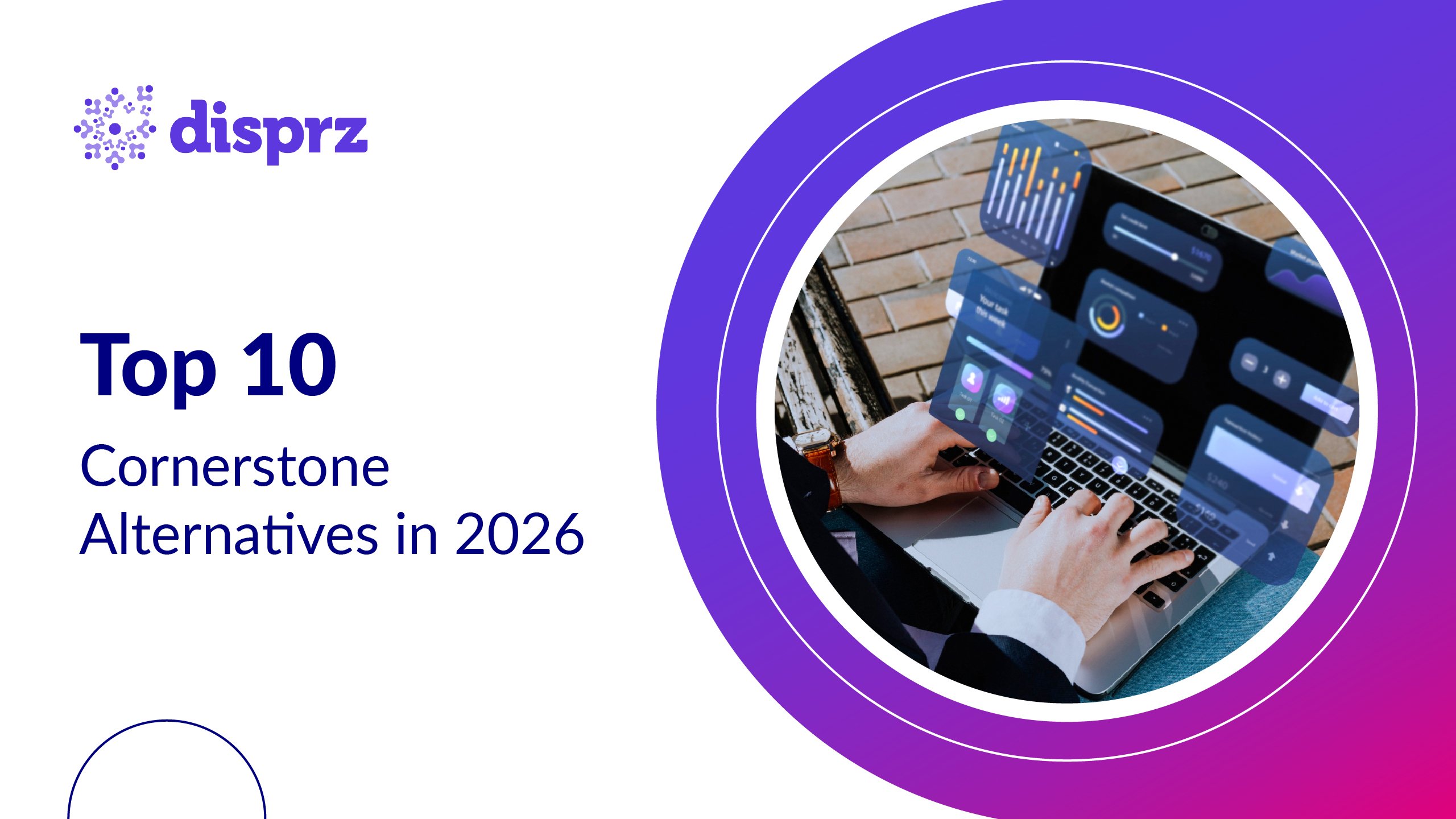The days of traditional classroom training (where employees passively absorb information before returning to their desks) are fading fast. Today’s fast-moving organizations are shifting toward on-the-job training (OJT), where learning happens in the flow of work, reinforced by real-time feedback and practical application. This shift isn’t just a trend; it’s a strategic necessity. According to LinkedIn Learning’s 2024 Workplace Report, companies that embed learning in daily workflows see up to 50% faster skill adoption and 30% higher productivity than those relying solely on formal training programs.
But here’s the catch: not every OJT program delivers results. The difference lies in how intelligently it’s powered. Modern OJT is no longer about shadowing or trial-and-error; it’s driven by AI recommendations, skills analytics, and AI-driven LXPs that personalize learning paths, track impact, and align outcomes to business goals.
So, before you celebrate your shift from traditional training to OJT, ask yourself – is your program truly driving measurable ROI, or just checking the box? And if not, it’s time to explore what makes modern on-the-job training truly work.
What is On-the-Job Training?
On-the-job training (OJT) is a hands-on workplace learning method where employees develop new skills while performing their actual job duties. Unlike traditional classroom sessions, OJT places employees in real-world scenarios where they gain job-specific skills, receive guidance from mentors or supervisors, and learn by doing. This practical approach enhances problem-solving, adaptability, and confidence, leading to deeper skill retention and faster productivity gains.
OJT can take many forms – from job rotation training and job instruction training (JIT) to coaching and mentoring at work – each tailored to help employees grow within their roles. These on-the-job training methods are among the most effective for building workforce capability and bridging performance gaps in real time.
Why OJT is Rising in 2025
The adoption of OJT continues to surge in 2025 as organizations seek faster, more measurable ways to upskill employees. The ROI speaks for itself – studies indicate that every $1 invested in structured training can yield up to $30 in productivity gains. Moreover, companies that combine formal learning with on-the-job training techniques report 50% higher skill adoption rates and 35% faster time-to-productivity among new hires.
As businesses face rapid technological shifts and evolving job roles, the benefits of OJT (including agility, scalability, and sustained performance) make it an essential component of modern learning strategies.
How AI & LXPs Support OJT Today
Modern on-the-job training examples are increasingly powered by AI-driven LXPs that take OJT beyond manual processes. These platforms create personalized skill pathways, recommend contextual learning resources, and use real-time analytics to measure engagement, completion, and impact.
Through AI recommendations and skills intelligence, managers can track proficiency, identify gaps, and deliver coaching and mentoring at work that’s data-backed and outcome-driven. The result? Smarter, faster, and more measurable OJT programs that align with business goals and drive continuous learning.
Benefits of On-the-Job Training (OJT) for Employees
On-the-job training empowers employees to learn by doing – developing skills directly in their work environment. Unlike traditional learning models, it provides practical exposure, immediate feedback, and measurable impact.
Here are the top benefits of OJT every organization should know:

1) Hands-on Skill Practice
Employees apply new concepts in real-time, reinforcing learning through direct experience. This practical approach makes OJT one of the most effective on-the-job training methods for skill mastery. By performing actual tasks, learners internalize processes faster and make fewer errors over time. It bridges the gap between theory and application, turning knowledge into repeatable performance behaviors.
2) Faster Proficiency & Productivity
With immersive on-the-job training techniques, employees reach performance benchmarks faster, driving higher output and ROI. Many organizations report up to a 30–40% reduction in ramp-up time with structured OJT programs. Because employees train in their actual work environment, learning transfer is instant. This leads to higher efficiency, quicker adaptation to new tools or workflows, and measurable improvements in productivity metrics.
3) Confidence in Role & Responsibilities
Real-world exposure and job instruction training help employees gain clarity, autonomy, and confidence in executing their daily tasks. As they practice under expert supervision, employees build assurance in handling challenges independently. This confidence not only improves job satisfaction but also enhances accountability and overall performance consistency.
4) Continuous Growth & Adaptability
Through job rotation training and coaching and mentoring at work, employees stay agile, learn cross-functional skills, and adapt quickly to changing business needs. OJT fosters a culture of lifelong learning by constantly exposing employees to new scenarios. This adaptability ensures they remain future-ready, even as roles evolve with emerging technologies and market dynamics.
5) Real-Time Mentor Feedback
OJT enables ongoing guidance from supervisors or mentors, creating a culture of continuous learning and improvement – a key driver behind the long-term OJT ROI seen across high-performing organizations. Immediate feedback helps employees course-correct quickly, refine their approach, and build stronger relationships with their mentors. This human connection accelerates learning retention and promotes sustained professional growth.
The 5 Core Types of On-the-Job Training
Organizations today use a variety of on-the-job training methods to build workforce capability and agility. Each approach offers a unique way to transfer knowledge, sharpen skills, and enhance job readiness.
Let’s explore the five most effective types of on-the-job training used by leading companies in 2025.
1) Job Shadowing
Definition: Job shadowing allows employees (especially new hires or career shifters) to observe experienced team members performing their roles. It’s a simple yet powerful way to understand workflows, tools, and expectations firsthand.
Example: A new sales associate shadows a senior account manager to learn prospecting techniques, CRM usage, and client communication styles.
Best-fit Roles: Ideal for customer-facing, technical, and leadership-track roles, where observation accelerates learning. Among all on-the-job training examples, job shadowing provides quick exposure without disrupting operations.
2) Coaching & Mentoring at Work
Definition: Coaching focuses on achieving short-term performance goals, while mentoring emphasizes long-term career and personal development. Together, they form one of the most impactful on-the-job training techniques for sustained growth.
How to Apply:
-
Assign skilled mentors or coaches within departments.
-
Use digital platforms or LXPs to track sessions and feedback.
-
Combine live conversations with AI-driven nudges for real-time improvement.
Benefits: When consistently applied, coaching and mentoring at work enhance engagement, retention, and confidence – directly boosting OJT ROI.
3) Job Rotation & Cross-Training
Definition: Job rotation training involves moving employees across roles or departments, while cross-training prepares them to handle multiple responsibilities within their function.
Benefits:
-
Builds multi-skill development and role flexibility.
-
Reduces dependency on specific team members and ensures business continuity.
-
Encourages innovation by helping employees understand diverse perspectives.
Best Use Cases: These on-the-job training methods are especially valuable in dynamic industries such as manufacturing, retail, and technology, where agility is key.
4) Apprenticeships
Definition: Apprenticeships combine structured learning with extended, supervised work experience. Unlike short-term OJT, apprenticeships are formal, long-term programs that blend theory with practice.
Example: A software engineering apprentice works under a senior developer for 12 months while completing certifications through an integrated LXP.
Benefits: Apprenticeships build deep technical expertise, ensure role readiness, and deliver measurable benefits of OJT for both employees and employers.
5) Job Instruction Training (JIT)
Definition: Job Instruction Training (JIT) is a step-by-step approach where a trainer demonstrates a task, explains each step, and then supervises the trainee performing it. It’s one of the most structured and measurable on-the-job training techniques.
How It Works:
-
Break down tasks into defined steps using visual aids or checklists.
-
Demonstrate each step, then allow the trainee to replicate it.
-
Provide immediate feedback and refine performance until mastery is achieved.
Best Use Cases: Manufacturing, operations, and safety-critical environments where consistency, precision, and quality are essential.
How to Make On-the-Job Training (OJT) More Effective
Adopting the right on-the-job training methods isn’t enough – success lies in how they’re designed, delivered, and optimized. Modern organizations are blending technology, data, and personalization to ensure every employee learns faster and performs better.
Here are five proven strategies to make on-the-job training more impactful in 2025.

1) Skill-Based Learning
The foundation of all effective on-the-job training techniques is a focus on skills rather than just tasks. Skill-based learning identifies the most relevant competencies for each role (from technical abilities to soft skills) and builds structured learning experiences around them.
Using job instruction training, job rotation training, and role-based practice, employees gain hands-on expertise that directly improves workplace performance and drives measurable OJT ROI.
2) Asynchronous Learning
Traditional OJT often relies on real-time supervision, but asynchronous learning allows employees to learn at their own pace. Microlearning videos, mobile assessments, and digital guides enable learning in the flow of work – anytime, anywhere.
This flexibility reduces downtime and supports continuous learning, making it one of the most efficient on-the-job training examples for remote or hybrid teams.
3) Blended Learning
Combine coaching and mentoring at work with digital enablement to create a blended approach that amplifies impact. In this model, employees learn through instructor-led sessions, simulations, and hands-on practice – all reinforced by digital content and self-paced resources.
Blended learning ensures theory meets real-world application, making on-the-job training methods more scalable and consistent across departments or locations.
4) Personalized Pathways
Every employee’s learning needs are unique. By using AI-driven personalization within LXPs, organizations can tailor on-the-job training techniques to individual skill gaps and career aspirations.
From personalized coaching and mentoring recommendations to adaptive skill journeys, personalization ensures higher engagement, faster upskilling, and stronger benefits of OJT across the workforce.
5) Analytics-Based Improvement
The most effective types of on-the-job training use analytics to close the loop between learning and performance. Real-time dashboards track completion rates, proficiency scores, and skill progression to measure true impact.
By analyzing these insights, managers can refine OJT programs, identify top-performing training methods, and continuously optimize ROI. Data turns training from a cost center into a performance driver.
See how Disprz LXP enables personalization and analytics at scale – empowering your organization to deliver smarter, data-driven OJT that builds future-ready talent.
Measuring OJT Impact
To truly understand the benefits of OJT, organizations must move beyond participation metrics and focus on measurable outcomes. Modern on-the-job training methods are now supported by advanced analytics and dashboards that connect learning to business performance.
Here’s how to measure and prove the ROI of your OJT programs effectively.
Key KPIs to Track
Tracking the right metrics ensures your on-the-job training techniques deliver tangible results. The following KPIs help measure both learning effectiveness and workforce performance:
Time-to-Proficiency
Measure how quickly employees reach expected performance levels after completing on-the-job training. A shorter time-to-proficiency indicates that learning is practical, relevant, and well-integrated into daily workflows. By monitoring this KPI, organizations can assess how efficiently new hires or reskilled employees transition into full productivity.
Productivity Improvement
Evaluate output before and after training to assess operational efficiency gains. When on-the-job training methods are structured and data-backed, productivity can rise by up to 30%. This KPI demonstrates how well employees apply their learned skills to deliver measurable results, directly linking OJT to overall business performance.
Error Rates
Monitor reductions in mistakes or rework to gauge how effectively employees apply new skills learned through job instruction training or job rotation training. Lower error rates reflect improved skill mastery and attention to quality – two of the most critical benefits of OJT in operational and safety-critical roles. Tracking this metric helps identify training gaps early for continuous improvement.
Completion Rates
Track participation and engagement to identify which on-the-job training examples resonate most with learners. Higher completion rates often indicate effective content design, strong mentor involvement, and a supportive learning culture. Combined with analytics, this KPI reveals the success of your on-the-job training methods in sustaining learner motivation.
Skill Scores & Readiness
Use skill assessments within your LXP to quantify progress and identify further development needs. Skill readiness scores showcase whether employees are job-ready and aligned with organizational skill frameworks. When analyzed regularly, this metric helps L&D teams personalize coaching and mentoring at work and continuously enhance OJT ROI.
Linking OJT to Business Outcomes
The true power of modern on-the-job training lies in connecting skill growth to tangible business results. Beyond simply developing employee capabilities, OJT enables organizations to align workforce learning with strategic goals, ensuring every training initiative contributes to measurable outcomes.
With AI-powered dashboards, predictive analytics, and integrated LXPs, companies can capture detailed insights on learner engagement, skill progression, and performance improvements. By correlating this data with key business metrics (such as revenue per employee, quality enhancements, operational efficiency, and customer satisfaction), organizations can not only track the success of on-the-job training methods but also make data-driven decisions that maximize OJT ROI.
Integrating OJT ROI tracking into business intelligence systems allows L&D teams to:
-
Visualize performance trends by department, role, or skill.
-
Identify which on-the-job training methods deliver the greatest productivity lift.
-
Demonstrate the financial impact of learning investments to leadership.
By linking learning data with operational KPIs, you transform on-the-job training from a compliance activity into a strategic growth driver.
Final Thoughts
On-the-job training remains one of the most effective ways to upskill employees and drive real business performance – but only when it’s structured, data-driven, and tech-enabled. The most successful organizations go beyond informal learning and adopt a strategic approach that blends modern on-the-job training methods such as job rotation training, coaching and mentoring at work, and job instruction training with AI-powered personalization and analytics.
When implemented through an advanced LXP, OJT becomes more measurable, scalable, and aligned with business outcomes. The result? Higher productivity, faster time-to-proficiency, and a clear, quantifiable OJT ROI that demonstrates the true benefits of OJT to leadership.
It’s time to transform learning in the flow of work into a competitive advantage. See how Disprz's AI-driven LXP platform helps organizations structure, personalize, and measure on-the-job training at scale.
FAQs
1) What are the main types of on-the-job training?
The main types of on-the-job training include job shadowing, coaching and mentoring at work, job rotation training, apprenticeships, and job instruction training. Each of these on-the-job training methods helps employees build real-world skills through hands-on experience, observation, and guided practice.
2) How is on-the-job training different from off-the-job training?
On-the-job training happens in the actual work environment, where employees learn by performing job tasks under supervision. Off-the-job training, on the other hand, takes place outside the workplace – through workshops, classrooms, or e-learning modules. OJT emphasizes immediate skill application and performance impact, leading to faster learning and stronger OJT ROI.
3) How long should OJT last?
The duration of on-the-job training depends on the role and complexity of the skills involved. While some on-the-job training examples such as job shadowing may last a few days, structured programs such as apprenticeships or job instruction training can extend for weeks or months. The key is to ensure training continues until employees reach full proficiency and confidence in their responsibilities.
4) What KPIs help measure OJT effectiveness?
To measure the success and benefits of OJT, track KPIs such as time-to-proficiency, productivity improvement, error rate reduction, completion rates, and skill progression scores. These metrics provide a clear view of how on-the-job training techniques contribute to both employee growth and business outcomes.
5) Which industries benefit most from OJT?
On-the-job training is valuable across industries but is especially impactful in manufacturing, retail, hospitality, healthcare, and technology. These sectors rely heavily on hands-on skill development, real-time problem-solving, and consistent performance – making on-the-job training methods essential for improving productivity, quality, and workforce adaptability.








